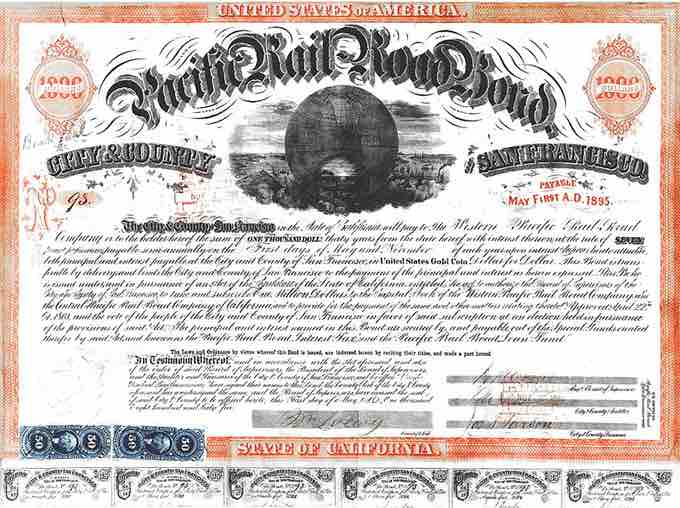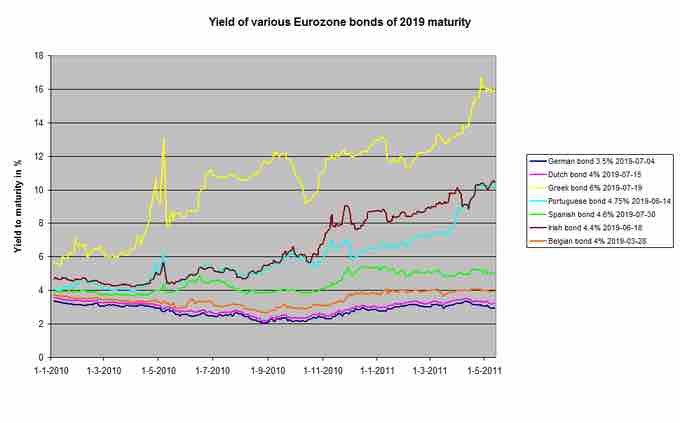Some other important features of bonds are presented below, namely the yield, market price and putability of a bond. ""

San Francisco Pacific Railroad Bond
$1,000 (30 year, 7%) "Pacific Railroad Bond" (#93 of 200) issued by the City and County of San Francisco under "An Act to Authorize the Board of Supervisors of the City and County of San Francisco to take and subscribe One Million Dollars to the Capital Stock of the Western Pacific Rail Road Company and the Central Pacific Rail Road Company of California and to provide for the payment of the same and other matters relating thereto" approved on April 22, 1863, as amended by section Five of the "Compromise Act" approved on April 4, 1864, to fund the construction of the Western Pacific Railroad between San Francisco Bay (at Alameda) and the CPRR of Cal. at Sacramento, dated May 1, 1865.
Yield
The yield is the rate of return received from investing in the bond. It usually refers either to the current yield, which is simply the annual interest payment divided by the current market price of the bond (often the clean price), or to the yield to maturity or redemption yield. Yield to maturity is a more useful measure of the return of the bond, taking into account the current market price, the amount and timing of all remaining coupon payments, and of the repayment due on maturity.

Eurozone Government Bonds Yield
Development of yield to maturity of bonds of 2019 maturity of a number of Eurozone governments.
Market Price
The market price of a tradeable bond will be influenced - amongst other things - by the amounts, currency and timing of the interest payments and capital repayment due; the quality of the bond; and the available redemption yield of other comparable bonds which can be traded in the markets. The price can be quoted as clean or dirty. "Dirty" refers to the actual price to be paid; while "clean" includes an adjustment for accrued interest. The issue price at which investors buy the bonds when they are first issued will typically be approximately equal to the nominal amount. The net proceeds that the issuer receives are thus the issue price, less issuance fees. The market price of the bond will vary over its life: it may trade at a premium (above par, usually because market interest rates have fallen since issue), or at a discount (below par, if market rates have risen or there is a high probability of default on the bond).
Putability
Some bonds give the holder the right to force the issuer to repay the bond before the maturity date on the put dates. These are referred to as retractable or putable bonds. Put dates are the dates on which putable bonds can be redeemed early. This type of bond protects investors: if interest rates rise after bond purchase, the future value of coupon payments will become less valuable. Therefore, investors sell bonds back to the issuer and may lend proceeds elsewhere at a higher rate. Bondholders are ready to pay for such protection by accepting a lower yield relative to that of a straight bond. A death put is an optional redemption feature on a debt instrument allowing the beneficiary of the estate of a deceased bondholder to put (sell) the bond (back to the issuer) at face value in the event of the bondholder's death or legal incapacitation.
Price of puttable bond = Price of straight bond + Price of put option
Price of a puttable bond is always higher than the price of a straight bond because the put option adds value to an investor. Yield on a puttable bond is lower than the yield on a straight bond.